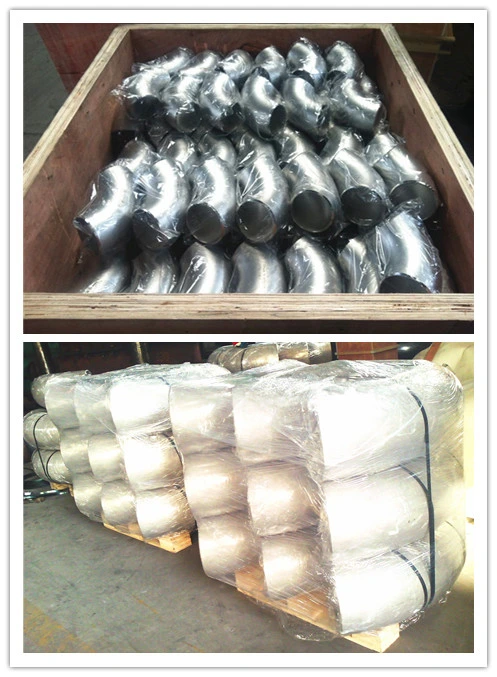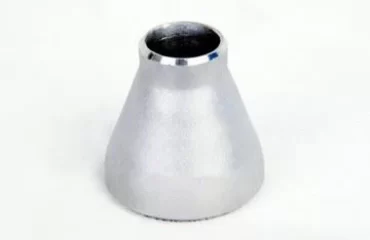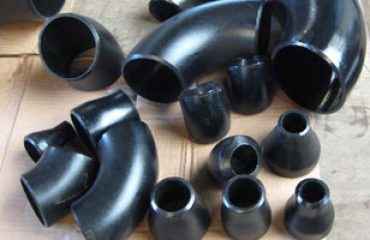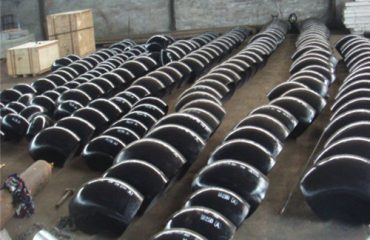
LR SR Stainless Steel Elbow Fitting ASTM A815 UNS S31803 / S32205 / S32750
Introduction
Stainless steel elbow fittings are critical components in piping systems, allowing for directional changes in the flow of liquids or gases. These fittings come in various types, including long radius (LR) and short radius (SR) elbows, and are made from different grades of stainless steel to suit various applications and environments. This article focuses on elbow fittings made from duplex stainless steel grades UNS S31803, S32205, and S32750, compliant with ASTM A815 standards.
Duplex Stainless Steel Grades
UNS S31803 / S32205
UNS S31803 and S32205 are the most common duplex stainless steels, offering a balanced mix of austenitic and ferritic properties. These grades provide:
- High Strength: Approximately twice the yield strength of austenitic stainless steels.
- Good Toughness: Even in low temperatures.
- Excellent Corrosion Resistance: Superior resistance to stress corrosion cracking, pitting, and crevice corrosion, especially in chloride-containing environments.
UNS S32750
UNS S32750, also known as Super Duplex, offers even greater strength and corrosion resistance compared to standard duplex grades:
- Higher Molybdenum Content: Enhances resistance to pitting and crevice corrosion.
- Increased Chromium Content: Provides excellent resistance to oxidizing environments.
- Superior Mechanical Properties: Higher strength compared to S31803 and S32205.
ASTM A815 Standard
ASTM A815 is the standard specification for wrought ferritic, ferritic/austenitic, and martensitic stainless steel piping fittings. This standard covers:
- Chemical Composition: Specifies the required chemical elements and their respective ranges.
- Mechanical Properties: Defines the necessary mechanical properties, including tensile strength, yield strength, and elongation.
- Manufacturing Process: Outlines acceptable manufacturing processes, including hot forming, cold forming, and welding.
- Testing Requirements: Includes requirements for non-destructive testing, such as ultrasonic and radiographic examinations, as well as pressure testing.
Types of Elbow Fittings
Long Radius (LR) Elbow
- Description: The centerline radius is 1.5 times the nominal pipe diameter.
- Applications: Used in systems where smooth flow and reduced pressure drop are critical.
- Advantages: Provides a gradual change in direction, minimizing turbulence and erosion.
Short Radius (SR) Elbow
- Description: The centerline radius is equal to the nominal pipe diameter.
- Applications: Used in tight spaces where a compact fitting is necessary.
- Advantages: Ideal for space-constrained applications but may cause higher pressure drops and turbulence compared to LR elbows.
Applications
Elbow fittings made from UNS S31803, S32205, and S32750 are widely used in industries such as:
- Oil and Gas: Offshore platforms, refineries, and pipelines.
- Chemical Processing: Handling of corrosive chemicals and aggressive environments.
- Marine: Shipbuilding and marine applications requiring high corrosion resistance.
- Pulp and Paper: Equipment exposed to harsh chemicals and high temperatures.
Advantages of Duplex Stainless Steel Elbow Fittings
- High Strength: Provides excellent mechanical properties, reducing the need for thicker walls.
- Superior Corrosion Resistance: Effective in harsh environments, including those with high chloride content.
- Cost-Effective: Longer lifespan and lower maintenance costs compared to traditional austenitic stainless steels.
- Versatility: Suitable for a wide range of applications due to its balanced properties.
Manufacturing Processes
Hot Forming
Hot forming involves heating the duplex stainless steel to a high temperature before shaping it into the desired elbow form. This process improves the material’s ductility and reduces the risk of cracking. Key steps include:
- Heating: The material is heated to a temperature range of 950-1150°C.
- Forming: The heated material is bent or formed into the desired elbow shape.
- Cooling: The formed elbow is cooled down, often in a controlled environment to maintain the material’s properties.
Cold Forming
Cold forming is performed at or near room temperature and is typically used for smaller and thinner fittings. It includes:
- Forming: The material is mechanically bent or shaped into the elbow form.
- Stress Relieving: The formed elbows may undergo heat treatment to relieve internal stresses caused by cold forming.
Welding
Welding is commonly used to join sections of stainless steel to create elbow fittings. Duplex stainless steels require special attention during welding to prevent phase imbalance and ensure corrosion resistance. Techniques include:
- Preparation: Cleaning and preparation of the weld surfaces.
- Welding: Using appropriate welding methods such as TIG (Tungsten Inert Gas) or MIG (Metal Inert Gas).
- Post-Weld Treatment: Heat treatment or pickling to restore corrosion resistance and mechanical properties.
Quality Assurance and Testing
Non-Destructive Testing (NDT)
Non-destructive testing ensures the integrity and quality of the elbow fittings without damaging them. Common NDT methods include:
- Ultrasonic Testing: Uses high-frequency sound waves to detect internal flaws.
- Radiographic Testing: Utilizes X-rays or gamma rays to reveal internal defects.
- Dye Penetrant Testing: Applies a dye to the surface to detect cracks and other surface discontinuities.
Pressure Testing
Pressure testing verifies the elbow fittings’ ability to withstand operating pressures. It involves:
- Hydrostatic Testing: Filling the fitting with water and pressurizing it to check for leaks and strength.
- Pneumatic Testing: Using air or gas to pressurize the fitting, often at lower pressures than hydrostatic testing.
Certification
Certified compliance with standards such as ASTM A815 is crucial. Certificates typically include:
- Material Test Reports (MTRs): Documenting chemical composition and mechanical properties.
- Compliance Certificates: Confirming adherence to relevant standards and specifications.
Future Developments
Advanced Material Technologies
- Enhanced Alloys: Ongoing research aims to develop new duplex stainless steel alloys with improved strength, corrosion resistance, and workability.
- Nanotechnology: Incorporating nanoparticles to enhance mechanical and corrosion properties.
Sustainable Manufacturing
- Recycling: Increasing the use of recycled materials in manufacturing elbow fittings to reduce environmental impact.
- Energy-Efficient Processes: Developing more energy-efficient forming and welding techniques.
Smart Manufacturing
- Automation: Implementing advanced automation and robotics to enhance precision and efficiency in the manufacturing process.
- Digital Twins: Using digital twin technology for real-time monitoring and optimization of manufacturing processes.
Conclusion
LR and SR stainless steel elbow fittings made from duplex stainless steel grades UNS S31803, S32205, and S32750 offer a robust solution for various industrial applications. Compliance with ASTM A815 standards ensures these fittings meet stringent requirements for quality, performance, and reliability. Whether for use in oil and gas, chemical processing, marine, or other industries, these fittings provide the necessary strength, corrosion resistance, and durability.




You must be logged in to post a comment.